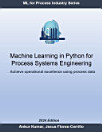Real-time Systems' Quality of Service: Introducing Quality of Service Considerations in the Life Cycle of Real-time Systems
About this ebook
Quality of service of a real-time system is dependent on the quality of its design and development process; hence, guidelines on how to integrate its parameters with this process are of the utmost importance in achieving the desired system quality.
Real-time Systems’ Quality of Service reviews the state of the art in quality of service evaluation for real-time systems. It gives a classification of the relevant parameters for quality of service evaluation and also determines the critical points in the design and development process of real-time systems – where performance criteria should be applied or checked. Then, software development and certification standards are assessed, and finally the authors elaborate on how the suggested criteria should be applied to the design, development, and certification process of real-time systems.
Real-time Systems’ Quality of Service will guide researchers and postgraduates in embedded and real-time systems through the process of introducing quality of service parameters into real-time systems.
About the author
Roman Gumzej received a doctorate in computer science and informatics from the University of Maribor in 1999. He worked both in industry (Institute of Information Science, IZUM Maribor) and academia (University of Maribor), before he was appointed assistant professor at the Institute of Informatics at the University of Maribor in 2004. He was a visiting researcher at ifak e.V. Magdeburg, Germany in 2002 and at Fernuniversität in Hagen, Germany in 2007. His research interests comprise all major areas of hard real-time computing with special emphasis on operating systems, co-design and quality-of-service. He is a member of the IEEE Computer Society and has authored or co-authored several refereed book chapters.
Wolfgang A. Halang received a doctorate in mathematics from Ruhr-Universität Bochum in 1976, and a second one in computer science from Universität Dortmund in 1980. He worked both in industry (Coca-Cola GmbH and Bayer AG) and academia (University of Petroleum and Minerals, Saudi Arabia, and University of Illinois at Urbana-Champaign), before he was appointed to the Chair of Applications-oriented Computing Science and made head of the Department of Computing Science at the University of Groningen in the Netherlands. Since 1992 he has held the Chair of Computer Engineering at Fernuniversität in Hagen, Germany, in the Faculty of Electrical and Computer Engineering, whose dean he was from 2002 to 2006. He was a visiting professor at the University of Maribor, Slovenia, 1997, and the University of Rome II in 1999. His research interests comprise all major areas of hard real-time computing with special emphasis on safety-related systems.




